As soon as you start camping in cold weather, you are bound to experience condensation in your tent. If not kept under control, condensation can actually cause serious problems and make your camp experience miserable. Here’s what you need to know about tent condensation, including how to prevent it and best tents for condensation.
What Causes Condensation in a Tent?
Air inside your tent will be warmer than the air outside. This warm air contains more water than cold air. When the warm air touches the cooler air on the tent fly, water inside the air is pushed out. It then turns into the droplets of water we call condensation.
Condensation is more likely to occur in these conditions:
- Still weather (no wind)
- Cold nights
- Wet and rainy conditions
Rainy weather is particularly bad for tent condensation. The rain evaporates into the air where it then cools and increases humidity. If it is also cold and still weather, some condensation is inevitable. (1, 2, 3)
Sources of Condensation in Tent
Anything that releases moisture into the tent will increase condensation. When camping, the most common sources of moisture are:
- Humid Air: Especially if it just rained, the high humidity will cause condensation to form in the tent faster.
- Breathing: Humans produce approximately 15 mL of water per hour while at rest. This amount can increase in very cold temperatures. After an 8 hour sleep, you will have released 120mL (4 fluid oz.) of water into the tent.
- Tent heaters: Some tent heaters, including gas heaters, release water into the air as they burn fuel. This adds to the moisture problem inside the tent.
- Cooking in vestibule: Steam from boiling water will be released into the tent and accumulate. *You should never cook inside your tent because of CO poisoning risk! (4, 5, 6)
Is my tent leaking or is it condensation?
Tent condensation usually looks like a wet film over the top of your tent. When enough water accumulates, it can drip down the tent walls. By contrast, a tent leak will be isolated to one spot of your tent. They usually occur at seams and only get wet in rainy weather.
Why Tent Condensation Matters
You might not mind a bit of condensation on your tent. But tent condensation can actually cause a lot of problems if you don’t keep it under control.
- You get colder. Condensation can cause your sleeping bag to get wet. The insulation won’t work as well (especially with down sleeping bags) and you can end up getting very cold. In sub-zero temps, you could end up dangerously cold.
- It’s unpleasant and annoying. Condensation can make the tent unpleasantly muggy inside. And it is very hard to get a good night’s sleep when there are drops of condensation raining down on your head.
- Mildew may form. Mildew forms if you put your tent away without completely drying it. On backpacking or thru-hiking trips, you’ll have to pack up your wet tent every morning and it won’t ever have time to dry, thus making it likely that mildew will form.
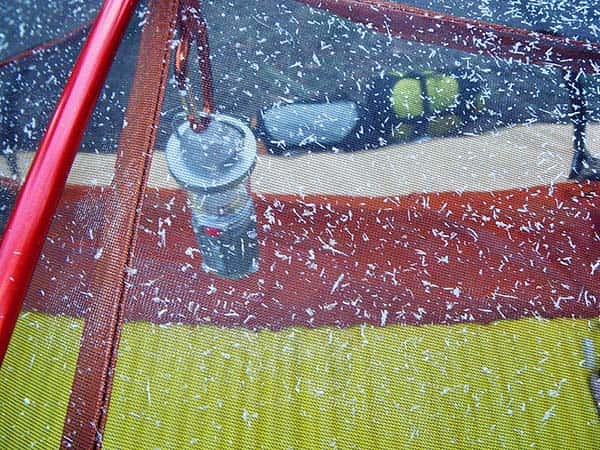
On very cold nights, the condensation will even turn into ice crystals on the tent wall. They then rain on you wyhen the morning sun hits them.
How Do Your Prevent Condensation in a Tent?
While some condensation is inevitable in bad conditions, you can mostly keep it under control. You’ll need to:
- Ventilate the tent
- Pitch the tent properly
- Choose the right campsite
- Keep your tent dry
- Don’t share a tent
- Store gear carefully
1. Ventilate
The key to preventing condensation in a tent is to ventilation. You’ll want to open all vents, doors and windows. Some tents even let you roll up part of the rainfly for ventilation. If the condensation is really bad in a single-wall tent, then you may even want to open up mesh entrances for better ventilation.
Ventilation means that wind will get into your tent, which in turn can make you colder. Thus, ventilation becomes a careful balance of preventing condensation and trapping warmth. Make sure you do not rely on your tent for warmth or you won’t be able to ventilation well.
Also Read: Is it really warmer in a tent?
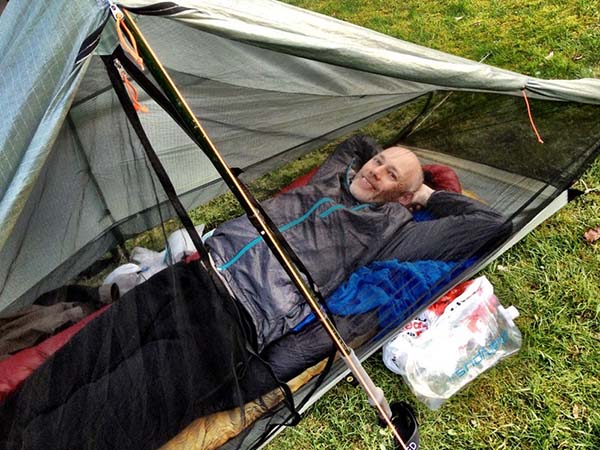
The UL Gossamer Gear tent has great ventilation to prevent condensation. Get it here.
2. Pitch Your Tent Properly
On nice nights, I’m admittedly a bit lazy when it comes to pitching my tent. But, when I know conditions will likely create condensation, I take the time to stake out every single guyline on the tent.
For double-wall tents, fully staking out the tent means good ventilation between the walls. It also keeps the inner and outer wall from touching.
For single wall and double wall tents, make sure the flysheet isn’t touching the tent wall. Condensation forms where these two touch.
3. Choose the Right Campsite
Where you pitch your tent also matters for preventing condensation. Try to pitch your tent with these 5 things in mind.
- With Wind Exposure: Choose an open space where you can get a good breeze. Orient the vents and doors towards the wind so you can ventilate the tent.
- Under Trees: Pitching under trees prevents condensation in two ways. First, it keeps your tent cooler during the day so there isn’t as much of a temperature difference at night. Secondly, the trees actually trap a bit of warmth under them so the air there will be slightly warmer than in an open space.
- On Dry Ground: Wet ground can contribute to condensation in the tent. Try to choose a dry place. Avoid pitching on wet, decaying leaves (even if they are softer than rock).
- Away from Water: The air near streams, ponds, lakes, and other water sources will be slightly more humid. The ground is likely wetter too. This increased humidity can make condensation worse.
- Higher Ground: Heat rises and cold air will sink. By pitching your tent on higher ground, there won’t be such a drastic temperature difference between the air inside and outside the tent.
- Avoid dips and depressions: Such as creek beds or valleys. These areas collect cold air and are more prone to condensation.
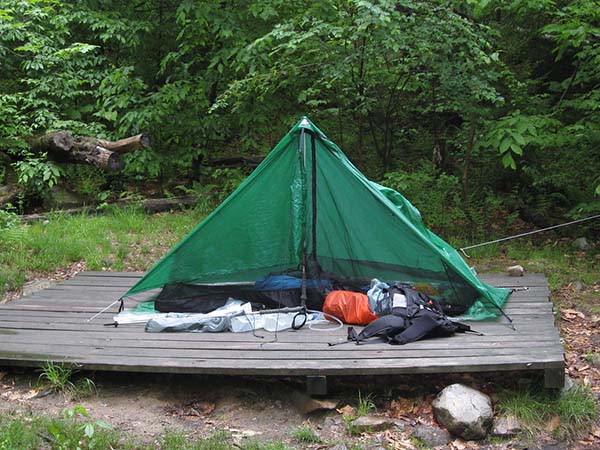
If a platform is available, pitch your tent on it instead of the wet ground.
4. Keep Your Tent Dry
If your tent is wet before you even get in it, the condensation is just going to get worse. To keep your tent dry:
- Pack a condensation towel: Use this for wiping wetness off your tent.
- Dry tent during the day: Avoid packing it until it’s dried. Leave the rainfly open to let it completely air out.
- Tent maintenance: Make sure you regularly re-seal seams and apply waterproof coating to your tent. This will keep moisture from outside from getting in. Also check your groundsheet for punctures.
5. Don’t share a tent
The more people you squeeze into a tent, the warmer it will be. You’ll also have more moisture from respiration. Someone will probably be pushing on the tent wall, causing condensation to form where they touch.
While you are at it, have your dog sleep outside. If your dog must sleep inside, then be sure the tent is big enough and you dry your dog off first.
6. Store Gear Carefully
- Don’t let any gear touch the walls of your tent: Especially on a two wall tent, condensation will form where the inner wall and rainfly touch.
- Keep wet gear outside: Moisture from your wet socks, rain jackets, etc. will contribute to condensation in the tent. If wet gear must come inside, then put it in dry sacks.
Dealing with Tent Condensation
In certain conditions, tent condensation is inevitable. Once it occurs, your biggest concern is staying dry. You can do that by:
Choose a Water Resistant Sleeping Bag.
Some sleeping bags have water-resistant finishes so won’t get as wet from condensation droplets. You are also better off with a synthetic sleeping bag; down bags absorb moisture like a sponge and don’t insulate well once wet.
Use a Waterproof Sleeping Bag Cover
You can put a waterproof liner (lik this ultralight one) around your sleeping bag to keep it dry. For a quick DIY solution, just wrap your rain jacket around the bottom of your sleeping bag. The feet are what end up getting wet anyway when they accidentally touch the tent walls.
Wipe the Inside of the Tent
Have a towel handy to wipe condensation away from the tent. Remember to wipe gently or the moisture will soak through the tent wall.
Use a Tent Dehumidifier
Tent dehumidifiers are more popular with people who camp in RVs, vans, or cars. They are pretty loud and require a power source.
Best Tent for Condensation
No such thing as a condensation proof tent. However, if you know you will be camping in cold or rainy weather, you’ll want to make sure you choose the best tent for condensation. Here’s what to look for.
Tent Material and Condensation
Breathable tent materials are less likely to have condensation issues. Most cheap polyester tents aren’t very breathable and condensation builds up easily. Better tents will be made from newer synthetics with better breathability.
Canvas tents are also great for breathability and any condensation which forms usually soaks into the fabric instead of dripping on your head. The downside is that they are insanely heavy and take forever to dry.
Single Wall, Double Wall, Tarp or Bivvy?
Double-wall tents are the best choice for preventing condensation. Condensation still forms but it’s mostly on the outer fly instead of the inner tent. Single wall tents and tarp tents are usually terrible for condensation, though some models have built-in vents to prevent this. Bivvy shelters are even worse because they usually have poor ventilation and are very small.
Lots of Ventilation
You can always ventilate through the doors but, if you really want to prevent condensation, make sure your tent has other vents. Look for:
- Roof vents: Ideally you should be able to open these from inside
- Bottom vents: These are great for allowing ventilation without also letting rain inside.
- Two doors: You’ll be able to get good cross ventilation when you open both doors at once.
- Can unfurl rain fly: When it’s not raining, you can move the rain fly partically or fully back for more ventilation.
Vertical Walls
Steeper walls give you more interior space. This helps prevent condensation because you are less likely to touch the inner wall fabric.
Tents with Good Ventilation
Below are some examples of tents with good ventilation.
Gossamer Gear Tarp Tent
Most tarp tents are terrible for condensation but this one has lots of ventilation. It sets up with trekking poles so is insanely light. See other trekking pole tents here. Get the tent here at Garage Grown Gear.
Sea to Summit Telos Tent
TheTelos backpacking tent by Sea to Summit was designed to prevent condensation. The inverted brow pole gives you more interior space and ventilation. There’s also a huge roof vent. I also love that you can pitch the fly first so you don’t get the inside of the tent wet when pitching in the rain. Get the tent here at REI.
REI Half Dome Tent
A lot of REI tents have anti-condensation features. The popular Half Dome tent has two doors for cross ventilation and top vents plus vertical walls. It comes as a 2P and 3P tent. Get it here at REI.
REI Co Op Trail Hut Tent
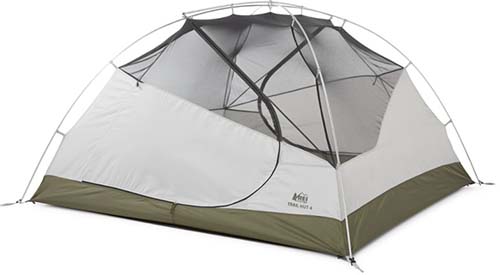
With two doors, a fly which can be rolled up and vents integrated into the doors, this is another great tent for preventing condensation. It’s also pretty affordable and comes in 2P and 4P sizes. Get it here at REI.
Nemo Aurora
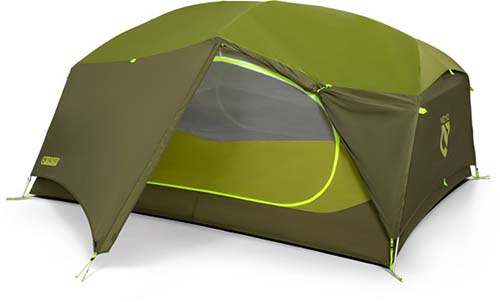
Available as a 2P and 3P tent, the Nemo Aurora is a great backpacking tent. It has vents in the fly and two large mesh doors for increased ventilation. The vertical walls help keep the inner wall dry. Get it here on Amazon or here on REI.
How do you deal with tent condensation? Let us know in the comments section below.
Sources:
https://www.ukcampsite.co.uk/chatter/display_topic_threads.asp?ForumID=32&TopicID=215383&ThreadPage=1,
https://seatosummit.com/blog/7-ways-to-manage-tent-condensation/ ,
https://seatosummit.com/blog/7-ways-to-manage-tent-condensation/ ,
Image credits:
“Lines” (CC BY 2.0) by rpongsaj,
“Condensation crystals on my tent” (CC BY-NC 2.0) by Al_HikesAZ,
“IMG_1057.jpg – https://www.flickr.com/photos/bierdoctor/941217685/” (CC BY-SA 2.0) by BierDoctor,
“Little Rock Pond Tenting Platform” (CC BY-NC-ND 2.0) by sectionhiker.com,
“Nemo Losi Storm 3P Tent” (CC BY 2.0) by ex_magician,


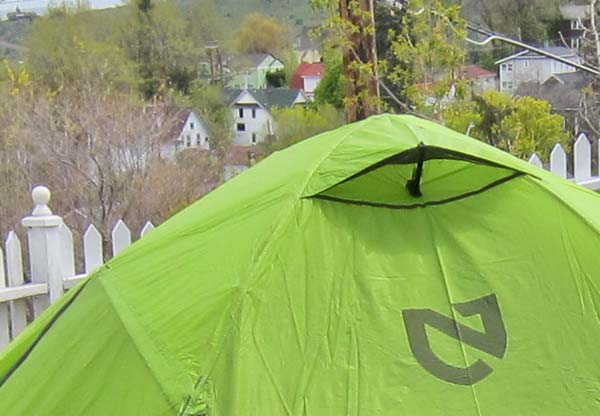
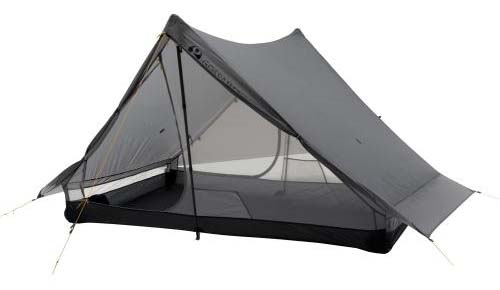
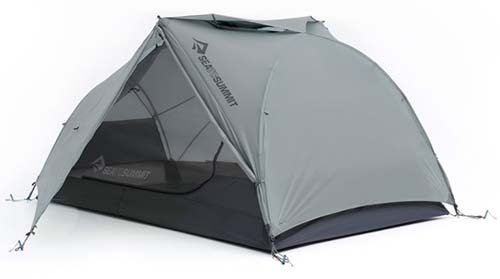
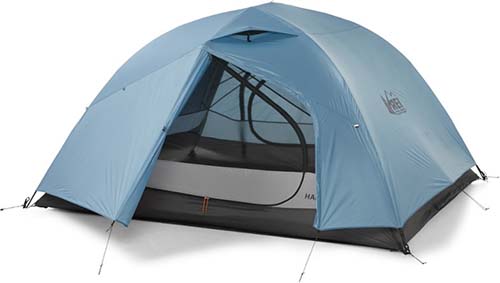

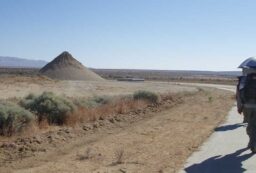








Post your comments